Space Science Teaching Resources
Browse printable space science worksheets, digital activities and a whole lot more to open the galaxy up for your elementary and middle school students.
This collection of NGSS scurriculum-aligned teaching resources has been created by our expert teacher team to save your valuable lesson planning time with differentiated and editable science printables and Google Slides.
Take off for the Milky Way with a look at the sun and moon and the eight planets of our solar system, introduce your students to astronomy and the history of space exploration and more with classroom-ready resources that have been carefully curated by our expert teacher team!
Looking to learn more about the space science curriculum, or just need some fresh ideas to engage your students? Read on for a primer from our teacher team!
What Is Space Science? A Kid-Friendly Definition
Space science is the study of the entire universe beyond Earth's atmosphere! It includes studying stars, the moon, the planets, galaxies, constellations and other phenomena that occur outside our planet.
This field of science covers a broad range of topics such as astrophysics, cosmology, planetary science, astrobiology and more.
How Do You Teach Space in Elementary School?
It's a complicated question, we realise, and every teacher will have their own answer based on both personal teaching philosophy and the state standards their students need to meet.
But space has fascinated kids (and grown-ups) for centuries, at least as far back as the days of Galileo inventing the telescope in the 1600s. And while more and more kids want to grow up to be a social media influencer, there are still plenty of students who are listing "astronaut" as a future career aspiration — a fact that we can't help but attribute at least in part to teachers and their inspiring lessons on space!

So how do you write your space lesson plans? It might help to start with the themes and topics that kids typically learn throughout primary school, no matter where you teach:
- The Solar System — Your students will get to know the eight planets of our solar system and the names of each, plus their order from the sun and their characteristics.
- The Sun — Students should be learning that the sun is a star as well as learning how it creates light and heat and how it affects the Earth.
- The Moon — Kids will learn about the moon's phases plus its role in the ocean's tides and its relationship to the Earth.
- Stars and Galaxies — The classification of stars and the constellations they form are on tap at this level. Kids may also learn about galaxies and the universe.
- Space Exploration — Taking off with the astronauts, primary learners should be exposed to lessons about the history of space exploration, the first moon landing and the various space missions.
- Space Travel — Related to the concept of exploration, this is a good time to talk about the challenges of space travel, such as zero gravity, and the importance of spacesuits and other equipment.
- Space Technology — What's going on in that wide space outside of the Earth's atmosphere? It's time to teach about space technology, including satellites, telescopes and the International Space Station.
- Plus Plan
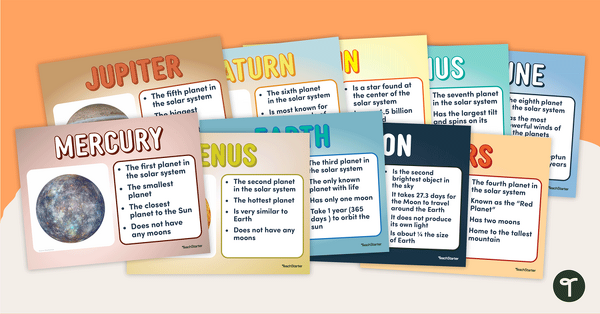
Individual Planet Posters
Use this set of posters with your space unit when teaching the individual planets.
- Plus Plan
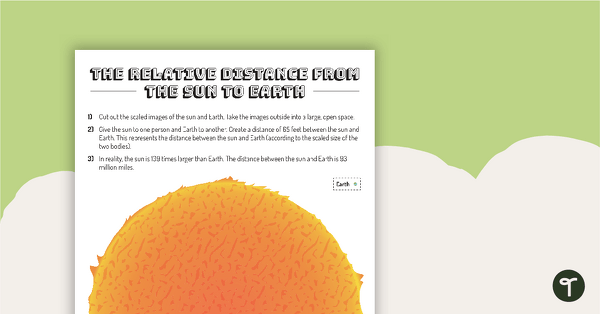
The Relative Distance From the Sun to Earth
Scaled images of the sun and Earth to use when exploring relative size and distance.
- Plus Plan
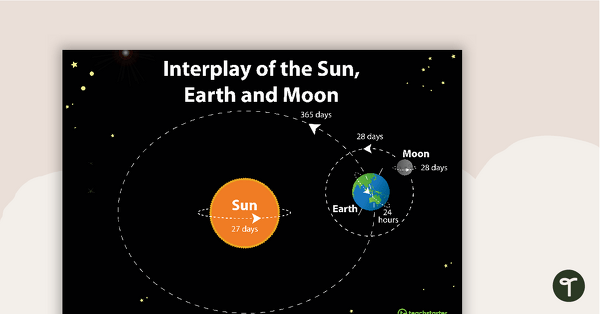
Interplay of the Sun, Earth and Moon Poster
A poster showing the interplay of the Sun, Earth and Moon.
- Plus Plan
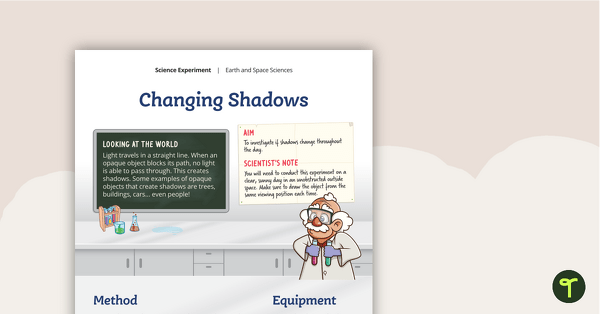
Changing Shadows – Science Experiment
A science experiment which explores how shadows change throughout the day.
- Plus Plan
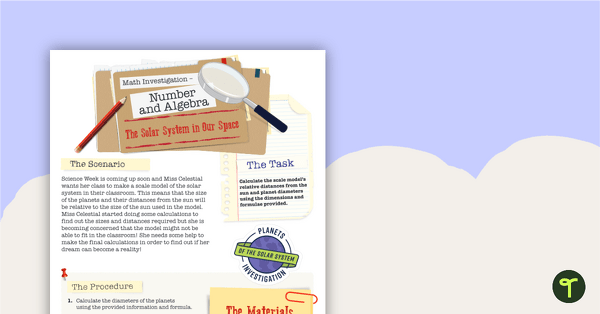
The Solar System in Our Space – Mathematics Investigation
A mathematics investigation about number and the scale of the solar system, embedded in a real-world context.
- Plus Plan
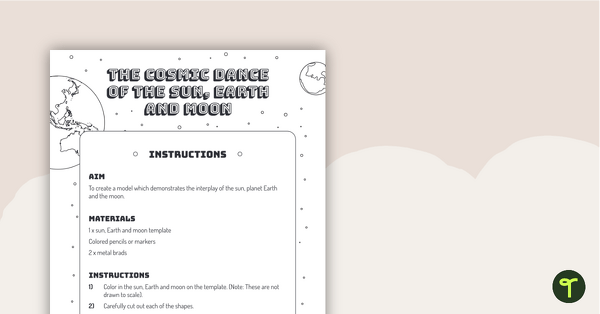
Movement of the Sun, Earth, and Moon Model
Demonstrate the interplay and movements of the sun, Earth and moon with this hands-on activity.
- Plus Plan
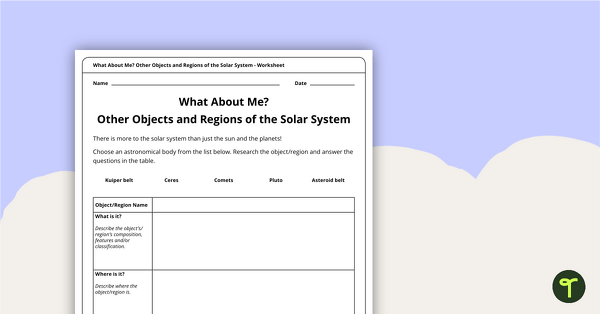
What About Me? Other Regions and Objects of the Solar System
A worksheet that explores other features in the solar system besides the sun and the planets.
- Plus Plan
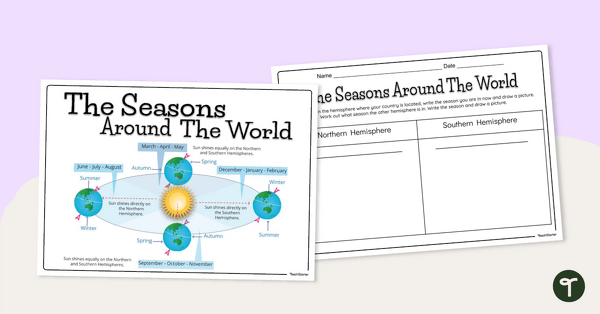
The Seasons Around the World Posters and Worksheet
A diagram showing the Earth's rotation around the sun and the corresponding seasons in the Northern and Southern Hemispheres.
- Plus Plan
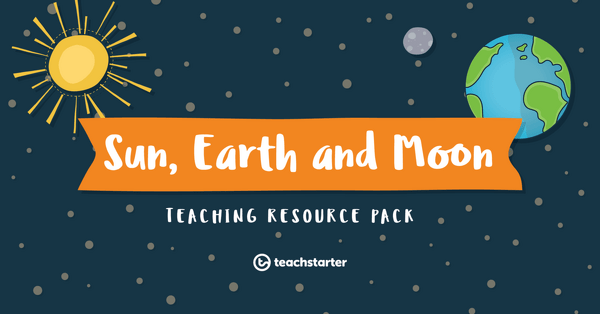
Sun, Earth, and Moon Teaching Resource Pack
A collection of teaching resources including posters, worksheets, and experiments to use when teaching your class about the interplay of the sun, Earth, and moon.
- Plus Plan
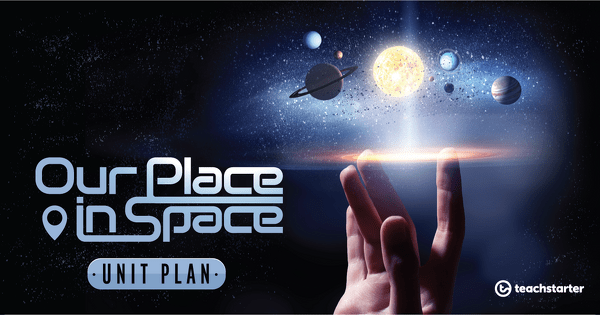
Our Place in Space - Unit Plan
This Earth and Space Sciences unit explores the concept that Earth is part of a system of planets orbiting around a star (the sun).
- Plus Plan
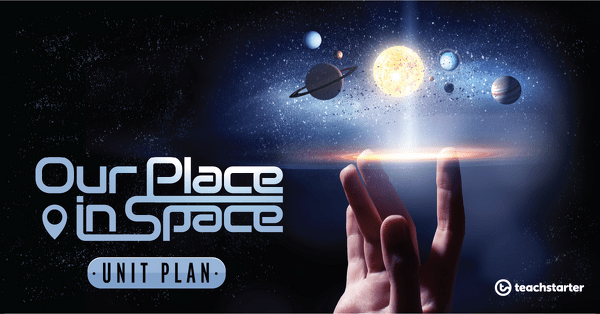
The Scale of the Solar System
- Plus Plan
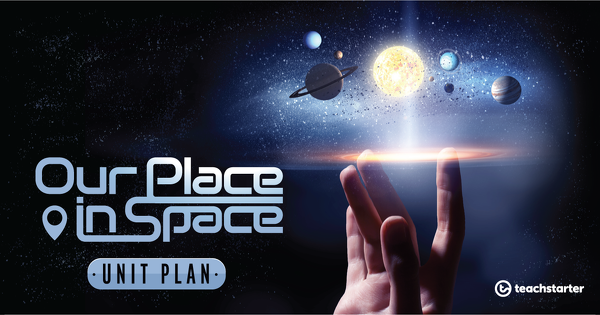
Diagram of the Solar System
- Plus Plan
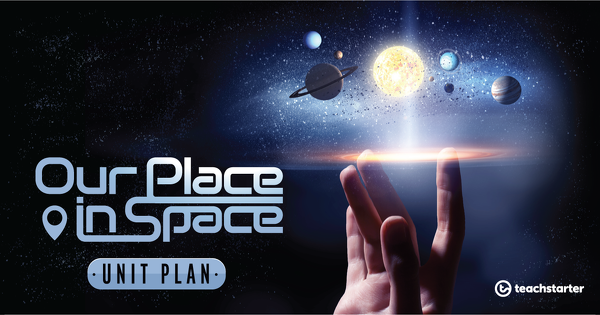
Interpreting the Night Sky
- Plus Plan
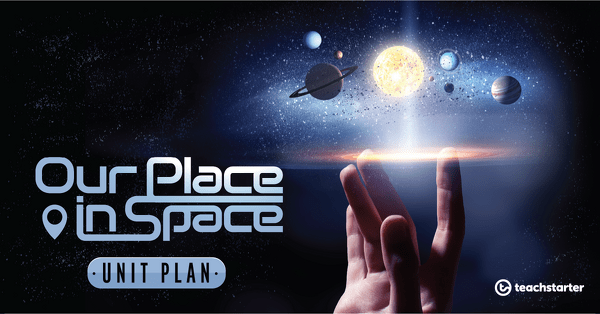
A Star, Some Planets and More!
- Plus Plan
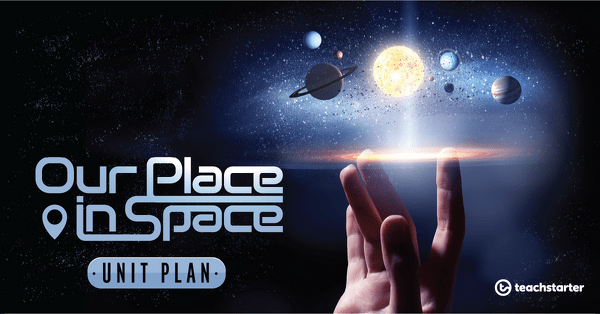
Sisters of the Solar System - The Jovian Planets
- Plus Plan
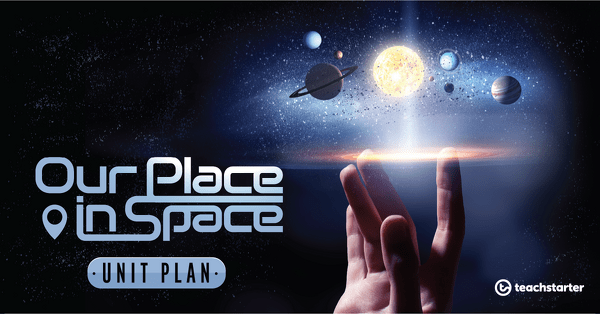
Sisters of the Solar System - The Terrestrial Planets
- Plus Plan
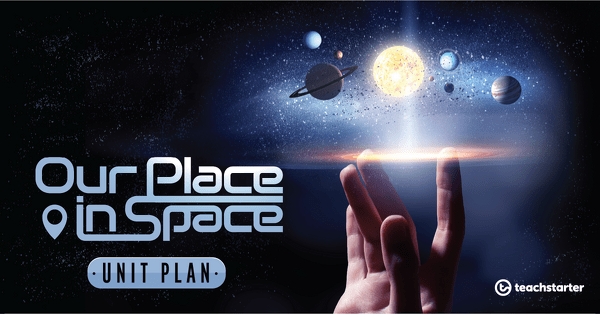
Earth - Third Rock From Sun
- Plus Plan
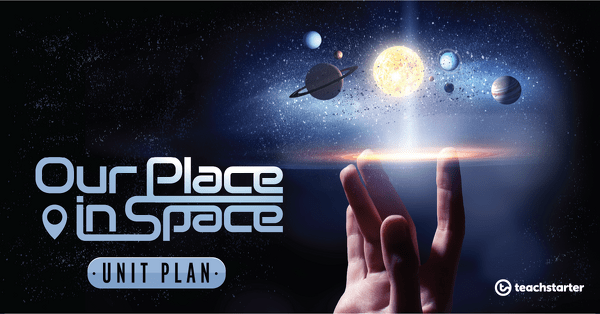
The Sun - Solar System Central
- Plus Plan
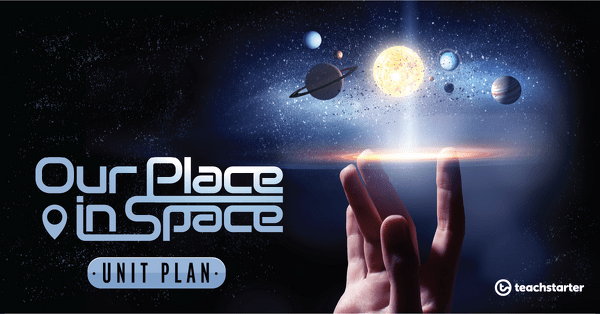
The Solar System Begins
-
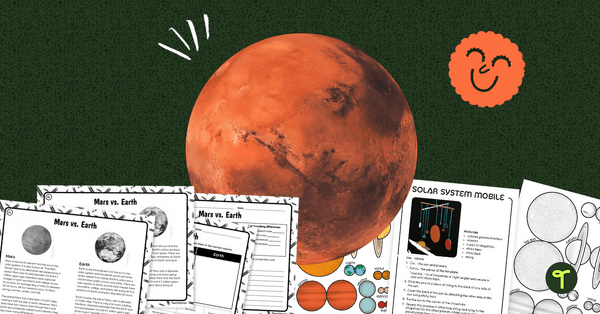
20 Fun Facts About Mars to Get Kids Excited About Your Space Lessons
Add these fun facts about Mars to your lesson plans — plus see our teacher team's favorite ways to use them in classroom activities!
-
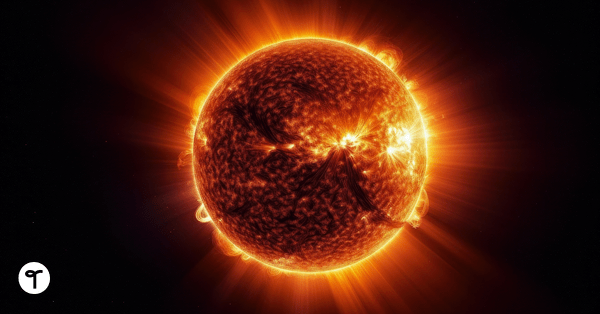
25 Fun Facts About the Sun for Kids to Share in Your Science Classes
Share these fun facts about the sun with kids in your classroom when teaching about space. Plus, explore teacher tips to help you use sun facts in your lesson plans.
-
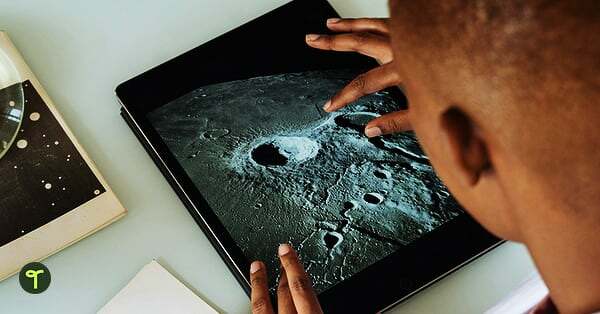
26 Fun Facts About the Moon for Kids That Teachers Can Use in the Classroom
Learn fun facts about the moon to inspire your kids in your class about space, plus teacher tips to help you incorporate moon facts into your lesson plans.
-
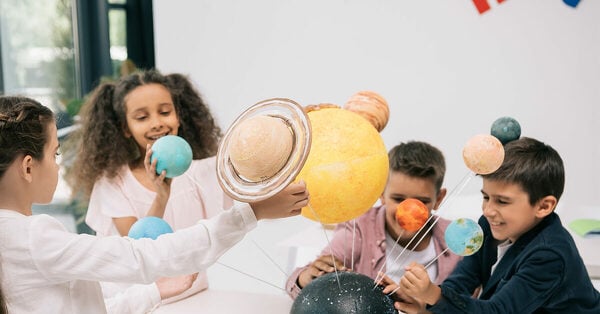
17 Out-Of-This World Space Activities for Kids + Teachers
Trying to take your space lessons to infinity and beyond? These space activities for kids incorporate math, ELA, and more!